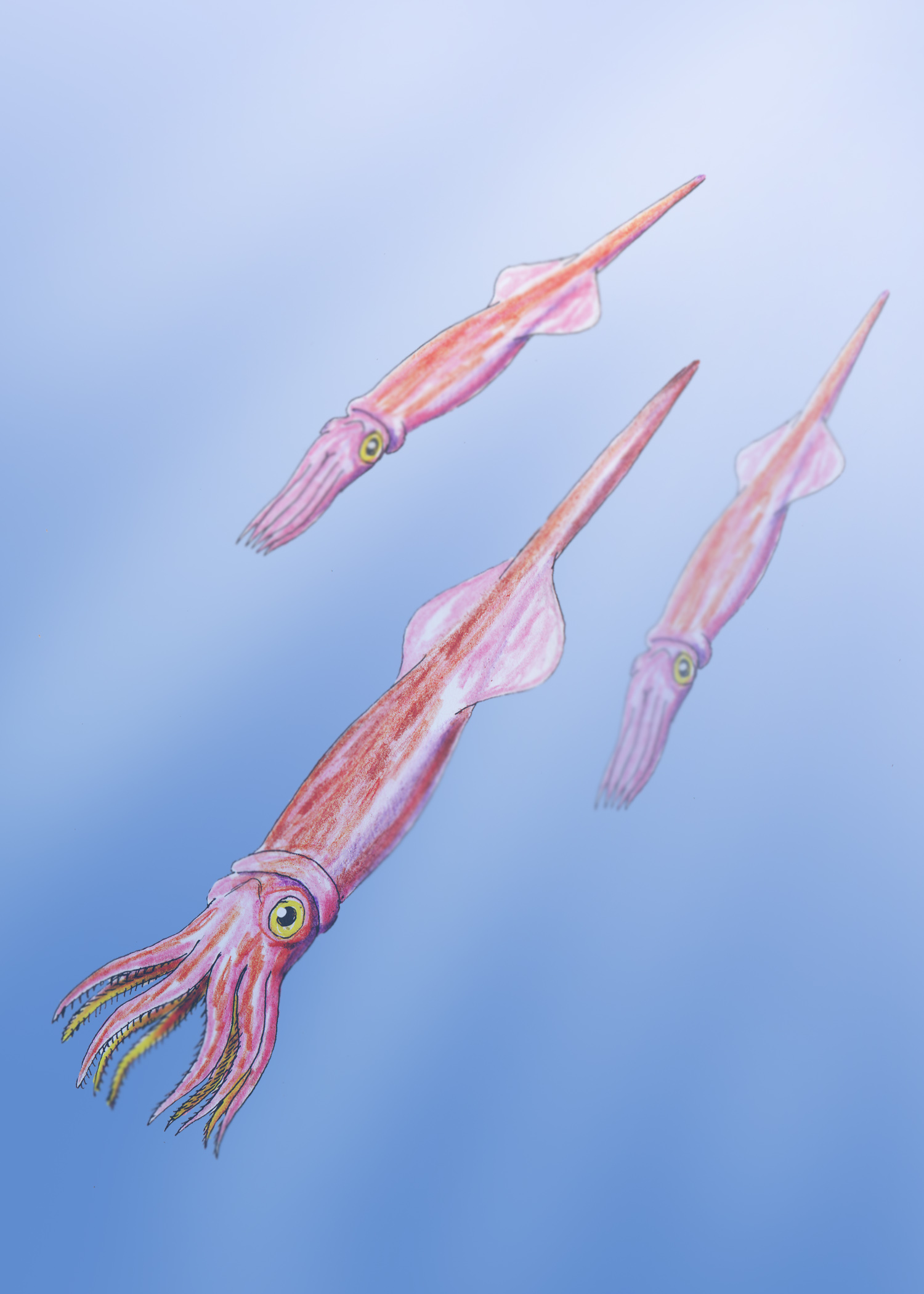|
Acrocoelites
''Acrocoelites'' is a genus of belemnite, an extinct group of cephalopods. Species Species placed by fossilworks. * ''Acrocoelites bobeti'' Lissajous 1927 * ''Acrocoelites brevisulcatus'' Quenstedt 1848 * ''Acrocoelites conoideus'' Oppel 1856 * ''Acrocoelites ilminstrensis'' Phillips 1867 * ''Acrocoelites inaequistriatus'' Simpson 1855 * ''Acrocoelites levidensis'' Simpson 1855 * ''Acrocoelites oxyconus'' Hehl 1831 * ''Acrocoelites pyramidalis'' Munster 1831 * ''Acrocoelites riegrafi'' Doyle 1992 * ''Acrocoelites rostriformis'' Theodori 1837 * ''Acrocoelites subtenuis'' Simpson 1855 * ''Acrocoelites tripartitus'' von Schlotheim 1820 * ''Acrocoelites vulgaris'' Young and Bird 1822 See also * Belemnite * List of belemnites This list of belemnite genera is an attempt to create a comprehensive listing of all genera that have ever been included in the extinct subclass Belemnoidea, excluding purely vernacular terms. The list includes all commonly accepted genera, as we ... Ref ... [...More Info...] [...Related Items...] OR: [Wikipedia] [Google] [Baidu] |
Belemnite
Belemnitida (or the belemnite) is an extinct order of squid-like cephalopods that existed from the Late Triassic to Late Cretaceous. Unlike squid, belemnites had an internal skeleton that made up the cone. The parts are, from the arms-most to the tip: the tongue-shaped pro-ostracum, the conical phragmocone, and the pointy guard. The calcitic guard is the most common belemnite remain. Belemnites, in life, are thought to have had 10 hooked arms and a pair of fins on the guard. The chitinous hooks were usually no bigger than , though a belemnite could have had between 100 and 800 hooks in total, using them to stab and hold onto prey. Belemnites were an important food source for many Mesozoic marine creatures, both the adults and the planktonic juveniles, and likely played an important role in restructuring marine ecosystems after the Triassic–Jurassic extinction event. They may have laid between 100 and 1,000 eggs. Some species may have been adapted to speed and swam in the tu ... [...More Info...] [...Related Items...] OR: [Wikipedia] [Google] [Baidu] |
List Of Belemnites
This list of belemnite genera is an attempt to create a comprehensive listing of all genera that have ever been included in the extinct subclass Belemnoidea, excluding purely vernacular terms. The list includes all commonly accepted genera, as well as genera that are now considered invalid, doubtful (''nomina dubia''), or were not formally published (''nomina nuda''), as well as junior synonyms of more established names, and genera that are no longer considered belemites. Naming conventions and terminology follow the International Code of Zoological Nomenclature as indicated. The list currently contains 100 generic names. List of belemnites See also * Belemnoidea * List of ammonites * List of nautiloids This list of nautiloids is a comprehensive listing of all genera that have ever been included in the subclass Nautiloidea, excluding purely vernacular terms. The list includes all commonly accepted genera, but also genera that are now considered in ... References :''Unc ... [...More Info...] [...Related Items...] OR: [Wikipedia] [Google] [Baidu] |
Genus
Genus ( plural genera ) is a taxonomic rank used in the biological classification of living and fossil organisms as well as viruses. In the hierarchy of biological classification, genus comes above species and below family. In binomial nomenclature, the genus name forms the first part of the binomial species name for each species within the genus. :E.g. '' Panthera leo'' (lion) and '' Panthera onca'' (jaguar) are two species within the genus ''Panthera''. ''Panthera'' is a genus within the family Felidae. The composition of a genus is determined by taxonomists. The standards for genus classification are not strictly codified, so different authorities often produce different classifications for genera. There are some general practices used, however, including the idea that a newly defined genus should fulfill these three criteria to be descriptively useful: # monophyly – all descendants of an ancestral taxon are grouped together (i.e. phylogenetic analysis should c ... [...More Info...] [...Related Items...] OR: [Wikipedia] [Google] [Baidu] |
Cephalopod
A cephalopod is any member of the molluscan class Cephalopoda ( Greek plural , ; "head-feet") such as a squid, octopus, cuttlefish, or nautilus. These exclusively marine animals are characterized by bilateral body symmetry, a prominent head, and a set of arms or tentacles ( muscular hydrostats) modified from the primitive molluscan foot. Fishers sometimes call cephalopods "inkfish", referring to their common ability to squirt ink. The study of cephalopods is a branch of malacology known as teuthology. Cephalopods became dominant during the Ordovician period, represented by primitive nautiloids. The class now contains two, only distantly related, extant subclasses: Coleoidea, which includes octopuses, squid, and cuttlefish; and Nautiloidea, represented by '' Nautilus'' and '' Allonautilus''. In the Coleoidea, the molluscan shell has been internalized or is absent, whereas in the Nautiloidea, the external shell remains. About 800 living species of cephalopods have been i ... [...More Info...] [...Related Items...] OR: [Wikipedia] [Google] [Baidu] |
Fossilworks
Fossilworks is a portal which provides query, download, and analysis tools to facilitate access to the Paleobiology Database, a large relational database assembled by hundreds of paleontologists from around the world. History Fossilworks was created in 1998 by John Alroy and is housed at Macquarie University. It includes many analysis and data visualization tools formerly included in the Paleobiology Database.{{cite web, title=Frequently asked questions, url=http://www.fossilworks.org/cgi-bin/bridge.pl?page=FAQ, publisher=Fossilworks, access-date=17 December 2021 References {{Reflist External links {{Wikidata property, P842 * [Baidu] |



.jpg)